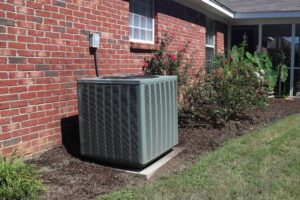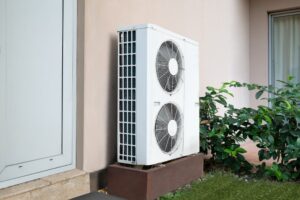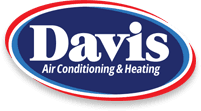Choosing a New HVAC System? Here’s a Guide That Can Help
Choosing a new HVAC system in the Houston and Fort Bend area takes some shopping around if you expect to find something that will keep you comfortable efficiently. Our intense summer heat demands reliable cooling, but winter’s cold rain and wind mean we can’t skimp on heating either.
By considering all your options and brushing up on common HVAC terminology, you can find equipment that will provide dependable comfort without high bills.
Keep Cozy With the Right Furnace
Selecting a furnace may not seem like a very important part of choosing a new HVAC system in our mild climate, but when those rare freezing temperatures come, you’ll be glad you have reliable heating equipment. A gas, propane or other fuel-burning furnace can easily handle to coldest temperatures our area sees.
These furnaces use natural gas or another fuel to create a flame under a heat exchanger inside the system’s indoor unit. The blower fan in this unit draws in cool air from your home and blows it across the heat exchanger, which transfers heat into the air. The warmed air continues out through ducts. Fumes from the combustion process are exhausted outdoors through a flue pipe.
While all fuel-burning furnaces contain the same basic components, the design of those components varies, which means furnace efficiency varies. Annual fuel utilization efficiency (AFUE) is used to indicate a furnace’s energy efficiency. AFUE tells you what percent of the fuel used heats your home versus going to waste. The higher the AFUE, the higher the furnace’s energy efficiency.
Some old furnaces still out there have AFUEs as low as the mid-50s, but the most efficient modern furnaces achieve AFUEs up to 98.5 percent. Our mild winters mean we don’t use our furnaces enough to warrant investing in the highest efficiency models, but efficiency is still an important consideration. The type of air handler a furnace uses can give you an indication of its efficiency and performance. There are three types available:
- Single-stage – Found in the oldest furnaces, these motors have only “off” and “high” settings. Because the typical home is rarely cold enough to need the furnace to run on high, this motor uses a lot of energy unnecessarily.
- Two-stage – Found in moderate efficiency furnaces, this type of motor can run at a “high” and “low” speed. The lower speed is usually enough to keep your home comfortable, so the motor saves energy by avoiding the high speed unless necessary.
- Modulating – These are also known as variable-speed air handlers because they can run at any speed within their capacity range, rather than only specific speed settings. The adjustable speed inverter and micro-controller chip used in these motors lets them choose the speed that’s most energy efficient for the heating demand at any given moment.
Find an A/C That Can Handle the Texas Heat
Thanks to our long, hot summers, the cooling system you select has an even greater effect on your energy bills than your heating system. This makes it arguably the most critical part of choosing a new HVAC system. A clear understanding of how air conditioners do their job will help you find a system that performs reliably and efficiently even in the hottest summers.
An air conditioner uses refrigerant fluid, which continuously circulates through the system to pick up heat inside your home and carry it outdoors. Cold refrigerant flows through the evaporator coil in the indoor unit, absorbing heat from the air and causing moisture in the air to condense into water. The cooled, dehumidified air is blown out into your ducts and the water is drained away through the condensate drain.
The now-hot refrigerant flows to the outdoor coil via copper tubing. As it circulates through the outdoor unit’s condenser coil, it releases the heat it picked up in the house. Passing through the expansion valve cools it further so it can re-enter the evaporator coil to absorb more heat.
As with furnaces, differences in component performance mean air conditioners vary in efficiency. A/C energy efficiency is rated by the seasonal energy efficiency ratio (SEER). SEER 14.5 is the lowest you’ll find in the southern U.S., but when choosing a new HVAC system, look for a model with a SEER no lower than 16 for optimal savings.
Air conditioners with SEERs as high as 23 are also available and these can be a wise investment if you use your cooling system for most of the day and you plan to stay in your current home for at least five years.
The type of components used in a particular A/C model can also give you an indication of its efficiency and reliability. A variable-speed scroll compressor, for example, is not only more efficient than other types, but also more reliable and quieter. An all-aluminum evaporator coil is unlikely to leak, unlike a copper and steel coil.
Heat Pumps: Convenient and Efficient
A furnace and air conditioner aren’t the only way to go when choosing a new HVAC system. Our relatively warm winters make heat pumps an ideal option for heating and cooling. A heat pump is essentially an air conditioner that can move heat in two directions instead of just one. In cooling mode, it works like an air conditioner to carry heat out of your home. In heating mode, it absorbs heat from the outdoor air and carries this heat into your home.
Because they move heat rather than create it, heat pumps are the most efficient electric heating method. If you currently heat with electric resistance heating, such as an electric furnace, upgrading to a heat pump could reduce your heating bills by 30 to 40 percent.
For homes without ductwork, ductless heat pumps let you enjoy the efficiency of a heat pump without the hassle of installing ducts. In these systems, an outdoor condenser unit is connected to one or more indoor air handlers by a slim conduit line. The air handlers deliver cool or warm air right into the room, eliminating the need for ducts as well as the energy waste ducts cause.
SEER is used to indicate a heat pump’s cooling efficiency, while the heating seasonal performance factor (HSPF) indicates its heating efficiency. An 8.2 HSPF meets Energy Star standards for a split-system heat pump, but models with HSPFs as high as 13 can be found. In our climate, however, SEER is the more important rating to consider.
Efficient Ductwork Makes a Big Difference
Getting your air ducts in shape is another part of the process of choosing a new HVAC system. No matter what the efficiency rating of your furnace, air conditioner or heat pump, it still depends on the duct system to reach its full potential.
The less your ducts leak air or allow heat transfer, the more efficient your whole heating and cooling system will be. More efficient ducts reduce the size, and therefore the expense, of the cooling and heating equipment you need. That means boosting your duct system’s efficiency now will save you money on both equipment purchases and future energy bills.
Duct joints, including where the ductwork joins the air handler, should be sealed with mastic or metal-backed tape to prevent air leakage. Ducts with cracked seals or damage should be air sealed and repaired. To keep your air at the right temperature, ducts in unconditioned spaces, such as the crawl space, should be insulted with an R-6 layer of ductwrap or fiberglass batts. A professional HVAC technician will know which sealing and insulation materials are optimal for your situation.
Dust and other debris in the ducts impair your system’s efficiency and put your equipment’s components at risk for damage. Although this isn’t a common problem, if your ducts haven’t been professionally inspected in the last five years, it’s worth having them looked at, and scheduling a duct cleaning if necessary, before you install new heating and cooling equipment.
For more information on choosing a new HVAC system, check out Davis Air Conditioning & Heating efficient solutions for cooling and heating, or call 888-710-5530 in the greater Houston area or 888-929-0049 anywhere in Brazoria County.
You May Also Like

5 Tips for Making Your AC Last Longer in Manvel, TX
Installing a new AC in your Manvel, TX home is a significant investment. There are several ways that you can prolong your… Continue Reading 5 Tips for Making Your AC Last Longer in Manvel, TX…

4 Worst Spots to Have Your Thermostat Installed in Oyster Creek, TX
Proper HVAC thermostat placement in your Oyster Creek, TX home is important for efficient cooling all summer. A poorly placed thermostat can… Continue Reading 4 Worst Spots to Have Your Thermostat Installed in Oyster Creek, TX…

3 Signs of a Failing Heat Pump Compressor in Pasadena, TX
Since the compressor is arguably the single most important part of your heat pump, any malfunctions that it experiences can impede the… Continue Reading 3 Signs of a Failing Heat Pump Compressor in Pasadena, TX…
